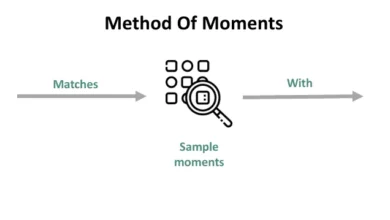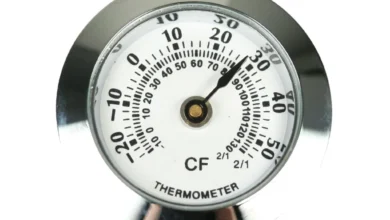DissplaceTex Unity: A Complete Guide to Displacement Textures in Game Development

1. What Is DissplaceTex in Unity?
DissplaceTex Unity: In Unity 3D, the term DissplaceTex (often spelled DisplaceTex) refers to the use of a displacement texture to modify the geometry of a 3D surface. Unlike regular textures, which only affect how light interacts with a surface (like diffuse or normal maps), a displacement texture actually alters the mesh geometry based on the values of the texture map.
In simpler terms, while a bump map or normal map fakes surface detail, DissplaceTex changes the mesh itself—pushing vertices up or down depending on grayscale values in the displacement map. White areas might represent raised surfaces, while black areas remain flat.
This technique allows developers to create:
-
Realistic terrains with hills, valleys, and cliffs.
-
Detailed character models with wrinkles, scars, and surface irregularities.
-
Dynamic effects like waves, craters, or destruction systems.
Unity supports displacement through custom shaders, Shader Graph nodes, and integrations with High Definition Render Pipeline (HDRP) or third-party plugins.
2. How DissplaceTex Works in Unity
The core principle of DissplaceTex is vertex manipulation. Each vertex in a mesh has a position in 3D space, and Unity can alter these positions in real time based on the intensity of a texture.
Step-by-Step Process
-
Import a Displacement Map
A grayscale image is imported into Unity. White = maximum displacement, Black = no displacement. -
Apply a Custom Shader
Using Shader Graph or HLSL/GLSL, the shader reads pixel data from the displacement map and modifies vertex positions accordingly. -
Control Scale and Strength
Developers can fine-tune how much the displacement affects the surface — useful for balancing performance and visuals. -
Lighting Integration
Once displaced, Unity recalculates lighting and shadows, resulting in physically accurate surface detail.
Unity Shader Graph Nodes for Displacement
In Shader Graph, displacement is typically achieved through:
-
Sample Texture 2D Node – Reads the displacement map.
-
Tiling and Offset Node – Adjusts UV scaling for precision.
-
Normal Vector/Position Node – Moves the mesh vertices.
-
Multiply & Add Nodes – Scales displacement values.
This flexible setup allows for procedural control over waves, deformations, and terrain features.
3. Benefits of Using DissplaceTex in Unity
Implementing displacement mapping (DissplaceTex) in Unity offers several advantages for developers and players:
Visual Realism
-
Surfaces look more 3D and tactile, as geometry is truly altered.
-
Rocks, bricks, and cliffs appear lifelike compared to flat textures.
Dynamic Environments
-
Real-time displacement allows environments to change dynamically — think footprints in snow or ripples in water.
Physics Interaction
-
Since geometry is altered, physics calculations like collisions can reflect the new surface.
Immersive Gameplay
-
Adds depth and realism, enhancing player immersion in open worlds, RPGs, and simulation games.
Flexible Use Cases
-
Works across terrains, characters, water, destruction mechanics, and even procedural effects in VFX-heavy games.
For these reasons, AAA developers and indie studios alike use displacement as a core technique to achieve next-level immersion.
4. Challenges and Performance Costs
While DissplaceTex Unity unlocks stunning visuals, it comes with challenges that every developer must consider:
High Performance Cost
-
Displacement requires real-time vertex manipulation, making it more demanding than bump or normal mapping.
-
On large meshes (e.g., open-world terrains), performance can dip dramatically without optimization.
Requires Dense Geometry
-
Displacement only affects existing vertices. A low-poly mesh won’t show fine detail, so higher-resolution meshes or tessellation must be used.
Compatibility
-
Best results require HDRP or advanced shader techniques. In Unity’s URP or Built-in Pipeline, results may be limited without custom scripts.
Shader Complexity
-
Writing efficient shaders for displacement requires knowledge of HLSL or Shader Graph optimizations, which may be challenging for beginners.
Physics Misalignment
-
Physics engines may struggle to align with displaced geometry unless recalculated — otherwise, collisions may still treat surfaces as flat.
In short, DissplaceTex Unity balances beauty with cost. Developers must weigh realism against performance, especially for mobile and VR applications.
5. Best Practices for Implementing DissplaceTex in Unity
To maximize efficiency and quality, here are expert tips for using Displacement Textures in Unity:
-
Use Tessellation Wisely
Enable tessellation shaders only where needed. Terrain and rocks benefit, but distant meshes can rely on normal maps. -
Blend Normal & Displacement Maps
Combine normal maps with displacement for detail + performance balance. Normal maps handle micro-details; displacement handles macro geometry changes. -
Optimize Textures
Use compressed grayscale displacement maps to save memory. 16-bit height maps are often sufficient. -
Level of Detail (LOD)
Create multiple LOD versions of your mesh, with displacement active only at closer distances. -
Bake Displacement When Possible
For static assets, pre-bake displacement into meshes using tools like Blender or ZBrush before importing to Unity. -
Use HDRP for Realism
HDRP’s tessellation and displacement features provide the best out-of-the-box support for real-time displacement. -
GPU-Friendly Shaders
Offload heavy displacement calculations to the GPU, reducing CPU strain.
By following these practices, you can achieve cinematic visuals while keeping your project optimized.
6. Alternatives to DissplaceTex in Unity
While DissplaceTex is powerful, not every project needs real-time displacement. Developers often mix or substitute with these alternatives:
Normal Mapping
-
Simulates surface detail by altering how light interacts.
-
Less realistic than displacement but much cheaper performance-wise.
Parallax Mapping / POM (Parallax Occlusion Mapping)
-
Creates the illusion of depth by shifting textures based on camera view.
-
Looks convincing from most angles but doesn’t alter actual geometry.
Tessellation Shaders Without Maps
-
Can procedurally deform geometry (e.g., for water waves).
-
Useful for effects where textures aren’t necessary.
Static Sculpted Meshes
-
Artists can pre-sculpt high-poly detail in Blender, ZBrush, or Maya, then bake details into textures.
-
Perfect for static environments that don’t require dynamic displacement.
Each method has trade-offs. The decision often depends on your target platform (PC, console, or mobile), game genre, and visual priorities.
Conclusion
DissplaceTex Unity — or displacement textures in Unity — represents a cutting-edge way to enhance realism in games. By modifying actual geometry based on texture maps, developers can create breathtaking terrains, characters, and effects.
However, the technique comes with trade-offs: it demands high geometry density, powerful GPUs, and careful shader optimization. For this reason, many studios combine displacement with normal maps and parallax mapping to strike the right balance between beauty and performance.
For developers working on AAA projects or visually ambitious indie titles, mastering DissplaceTex in Unity is a must. It opens the door to more immersive worlds, where every rock, ripple, and wrinkle feels convincingly real.
FAQs About DissplaceTex Unity
1. What is DissplaceTex in Unity?
It refers to the use of displacement textures to physically alter mesh geometry in Unity based on grayscale height maps.
2. How does it differ from normal maps?
Normal maps fake surface detail by adjusting lighting, while displacement actually moves vertices to create real depth.
3. Does Unity support displacement mapping by default?
Yes, especially in the HDRP pipeline. In URP or Built-in, developers may need custom shaders.
4. Is displacement mapping good for mobile games?
Generally no — it’s too performance-heavy. Alternatives like normal maps are better for mobile.
5. What’s the best way to optimize DissplaceTex in Unity?
Use tessellation sparingly, combine with normal maps, and implement LOD systems for efficient rendering.




